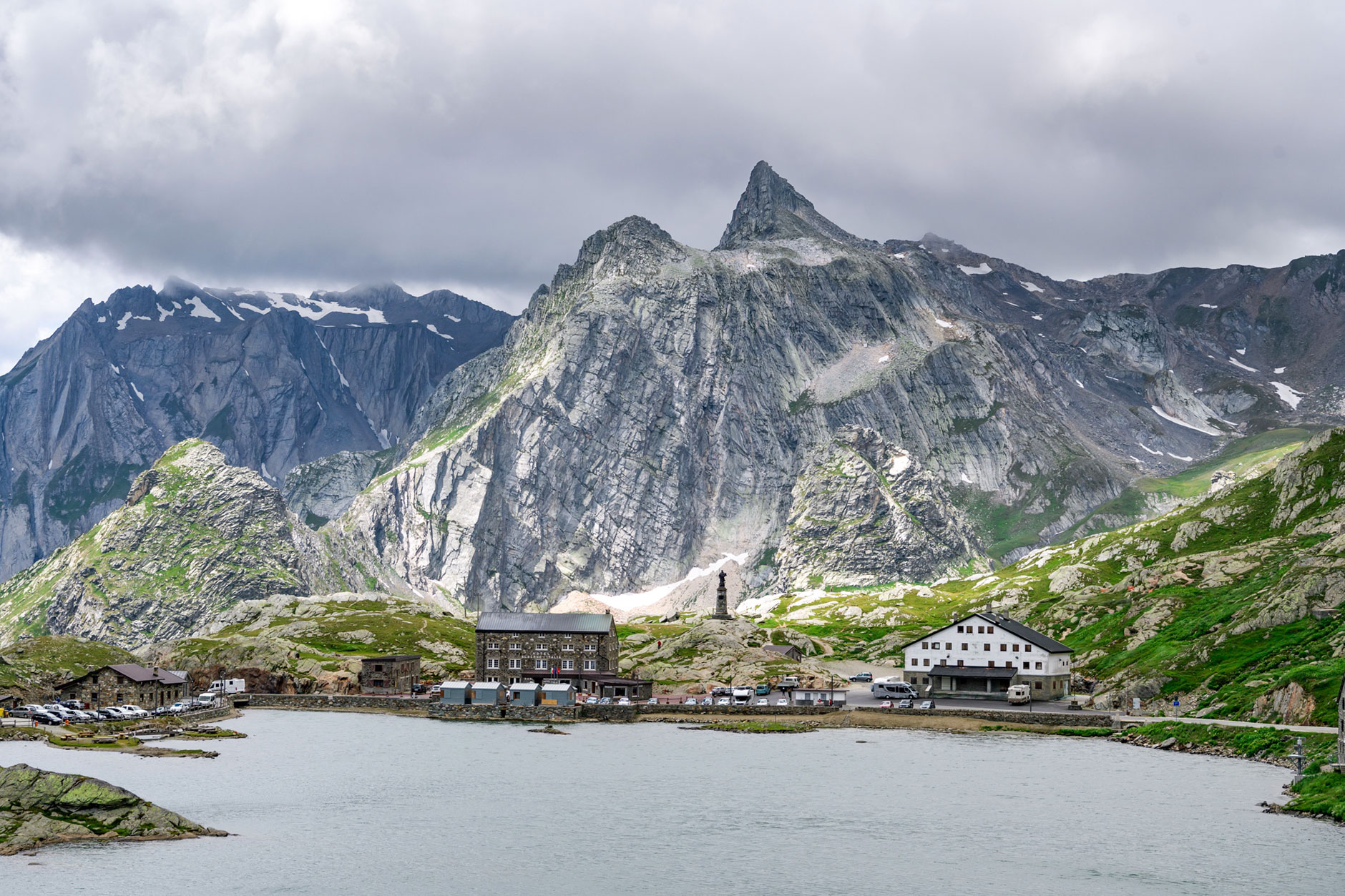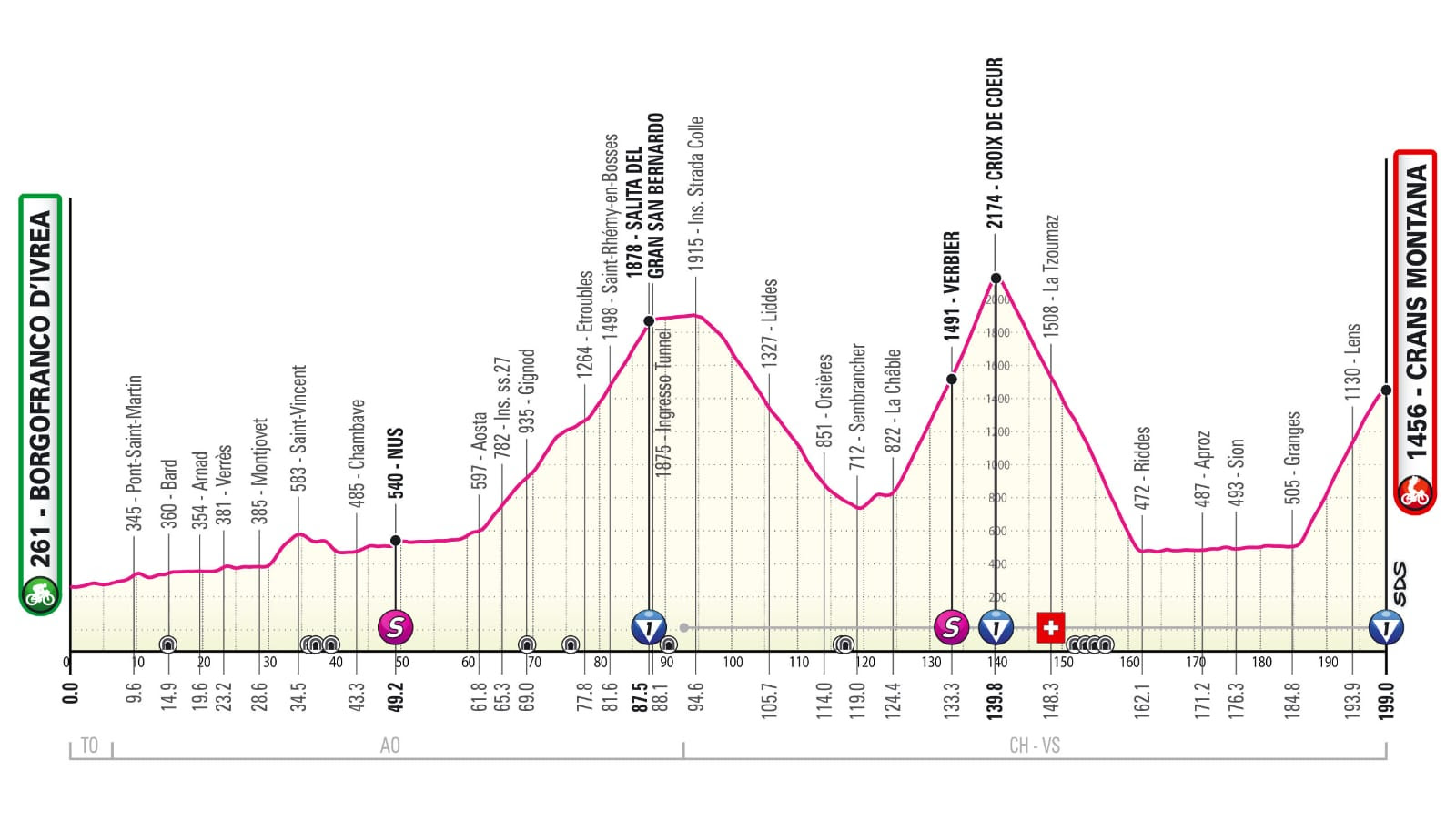Giro d'Italia: Grand St Bernard Pass removed from stage 13 due to snow
Removal of Giro's highest climb sees stage shortened to 199km and rerouted through mountain tunnel

The peloton will face a significant change to the Giro d'Italia route during the second week as organisers have been forced to remove the Grand St Bernard Pass (Passo Gran San Bernardo) from the stage 13 route from Borgofranco d’Ivrea to Crans-Montana on Friday.
The ascent was positioned as this year's Cima Coppi, the highest peak of the race, at 2,469m. However, the roads to the top are currently closed due to snow, according to a report in Le Nouvelliste on Monday, with more snow forecast and risk of avalanches.
Giro race organisation confirmed the change on Tuesday, stating that the pass –which connects Martigny in the canton of Valais in Switzerland with Aosta in the region Aosta Valley in Italy – will not be used.
"Given the exceptional snowfall, and in the light of the avalanche danger, it is announced that the race will not pass over the Great St. Bernard Pass, but through the tunnel. The Cima Coppi will be moved to the finish at the Tre Cime di Lavaredo.
"The Gran San Bernardo remains a 1 st category climb, and points will be awarded accordingly. As a result of this change, the stage will have a length of 199km."
Stage 13 was expected to run 207km from Borgofranco d’Ivrea over the Swiss border and to the summit finish at Crans-Montana, pass two main mid-race ascents; the Grand St Bernard, a punishing 34km ascent with an average gradient of 5.5%, and the Croix de Cœur, 15km at an average of 9%.
The peloton would then cross a flat section in the Rhône valley and then make a final 13km approach to the summit finish at Crans Montana. The closing climb averages 7%, with the steepest section on the opening hairpins. The gradient eases out until the last kilometres, with a mild descent before heading back uphill for the final 300 metres.
Get The Leadout Newsletter
The latest race content, interviews, features, reviews and expert buying guides, direct to your inbox!

The removal of the Grand St Bernard means that the new Cima Coppi would be Tre Cime di Lavaredo on stage 19. On this stage, the peloton will begin in Longarone and race 183km to the summit of Tre Cime di Lavaredo. The climb is 7.1km at an average of 7.8% and with pitches as steep as 14.6%, running to an elevation of 2,307m.
Even before the start of the Giro d'Italia, former pro Steve Morabito, director of the Giro Valais 2023 Association, had hinted at the possibility of the race not being able to pass Grand St Bernard due to the snow.
“Our dream is to cross the pass in the middle of the walls of snow," Morabito, told Le Nouvelliste on May 3. “If this is not possible, the riders will enter Switzerland via the tunnel, which would be closed to traffic for approximately two hours. The decision to open the road or not rests with the Mobility Service, which must, above all, secure its own employees."
"The problem is that for a month, it has snowed every day at the top of the pass. Snow removal requires a lot of work. But in no case, the step would be called into question. It would just be seven kilometres shorter and reduced by some 500 metres of elevation."
The climb has featured on the Tour de France route five times, though hasn't been part of the Giro since 1963. It was discovered in 1952 and that year Gino Bartali led the way across the top. Five years later it was Charly Gaul's turn, while in 1959 the Luxembourger soared to overall victory on the epic, 296km-long penultimate stage, putting 10 minutes into previous leader Jacques Anquetil.
The Cima Coppi prize, part of the race since 1965 to honour five-time winner and Italian cycling hero Fausto Coppi, is handed out to the first rider to pass the highest climb of the Giro d'Italia each year. While the prize once saw double mountain classification points awarded for riders across the top, the climb now sees a more modest points scale of 50, 30, 20, 14, 10, 6, 4, 2, and 1

Kirsten Frattini is the Deputy Editor of Cyclingnews, overseeing the global racing content plan.
Kirsten has a background in Kinesiology and Health Science. She has been involved in cycling from the community and grassroots level to professional cycling's biggest races, reporting on the WorldTour, Spring Classics, Tours de France, World Championships and Olympic Games.
She began her sports journalism career with Cyclingnews as a North American Correspondent in 2006. In 2018, Kirsten became Women's Editor – overseeing the content strategy, race coverage and growth of women's professional cycling – before becoming Deputy Editor in 2023.